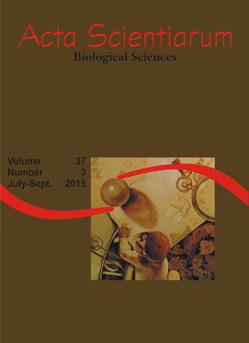<b>Nesting and reproduction of <i>Pachycondyla striata</i> (Formicidae: Ponerinae) in urban areas: an ant that offers risk of accidents
Resumo
It was conducted a research, in urban areas, on the nesting habits and reproductive period of Pachycondyla striata, a species of ant that stings painfully. The study was motivated by the frequent reports of accidents in the city of São Paulo. The reports are more common during the reproductive seasons of the species, when the winged females sting the population, since they enter the houses of the people attracted to light. Although anaphylaxis for P. striata has not been reported yet, other close species may cause anaphylaxis, which makes important to understand their biology in order to take management and control measures. Fourteen green areas in the city of São Paulo, Brazil, were monitored in the search for the species and their nests that were found in 64.3% of the areas. The nests are located around the trunk base of the trees, between the roots that protrude from the ground, under the rocks and through the cracks and crevices on the sidewalks. The spatial distribution of the nests is random. The reproductive period of P. striata was monitored from April 2012 to November 2013, through passive collection and laboratory colony. The nuptial flights occur during the cooler and drier months of the year, between July and September.
Downloads
DECLARAÇÃO DE ORIGINALIDADE E DIREITOS AUTORAIS
Declaro que o presente artigo é original, não tendo sido submetido à publicação em qualquer outro periódico nacional ou internacional, quer seja em parte ou em sua totalidade.
Os direitos autorais pertencem exclusivamente aos autores. Os direitos de licenciamento utilizados pelo periódico é a licença Creative Commons Attribution 4.0 (CC BY 4.0): são permitidos o compartilhamento (cópia e distribuição do material em qualqer meio ou formato) e adaptação (remix, transformação e criação de material a partir do conteúdo assim licenciado para quaisquer fins, inclusive comerciais.
Recomenda-se a leitura desse link para maiores informações sobre o tema: fornecimento de créditos e referências de forma correta, entre outros detalhes cruciais para uso adequado do material licenciado.












1.png)




3.png)













